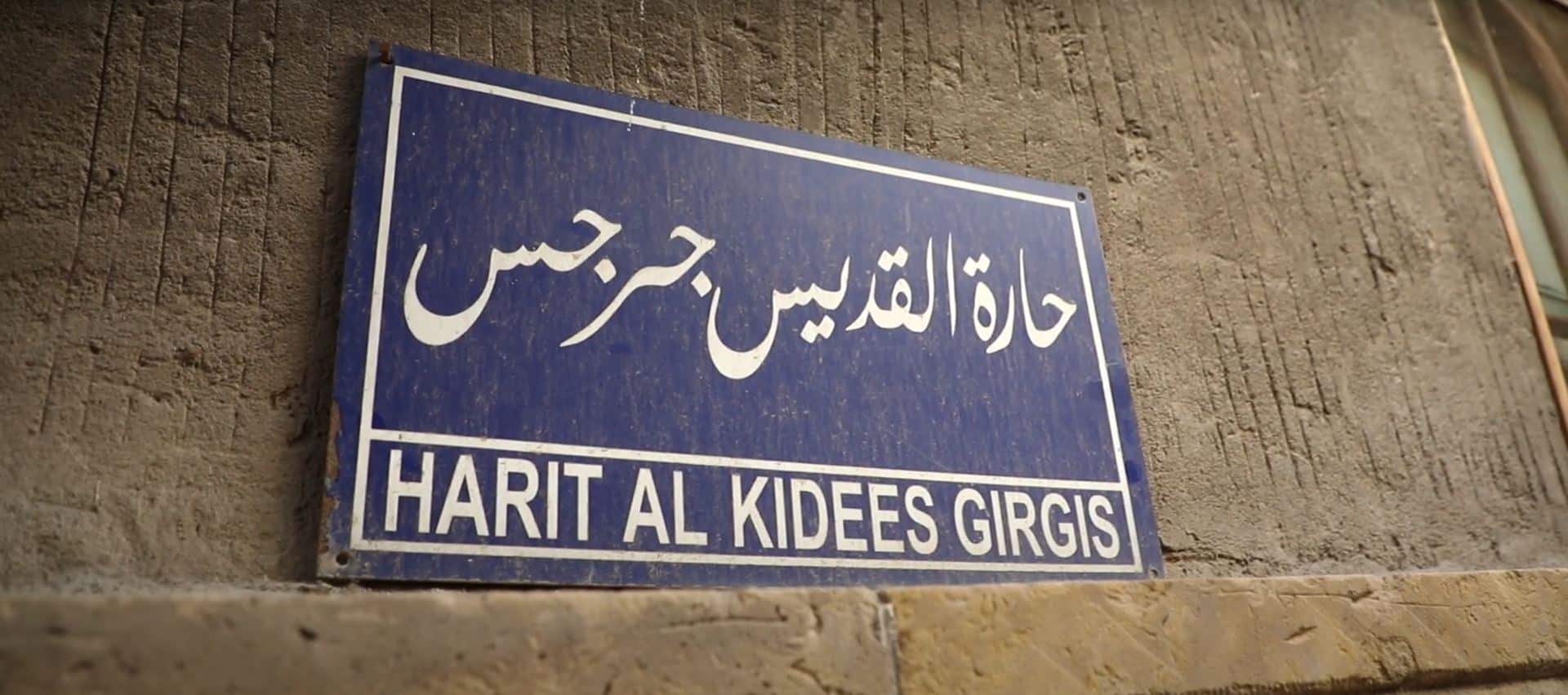Coptic Cairo – Religious Complex – Egypt

Updated On: April 16, 2024 by Maha Yassin
Coptic Cairo, nestled in the heart of the bustling Egyptian capital, Cairo, is a remarkable and sacred enclave that offers a glimpse into the rich tapestry of Egypt’s religious and cultural history. This ancient district, also known as “Old Cairo,” is home to many historic churches, monasteries, and other religious sites that have been pivotal in developing Coptic Christianity. This article will deeply dive into Coptic Cairo, exploring its history, significance, architectural marvels, and spiritual importance for the Coptic Christian community.
What does Coptic mean?
“Coptic” refers to the indigenous Christian community of Egypt and the Christian Church in Egypt that uses the Coptic language for its liturgy and religious texts. Coptic Christianity has a long and rich history in Egypt, dating back to the early centuries of Christianity. The word “Coptic” is derived from the ancient Egyptian word “Hikaptah,” which refers to the capital city of Memphis. Over time, it became associated with the Christian community in Egypt, especially after the Christianization of the region.
Coptic Christians are part of the larger Christian tradition but have distinct liturgical practices, traditions, and cultural heritage. The Coptic language, a descendant of ancient Egyptian, is still used in Coptic Christian liturgy, making it a unique and essential element of their religious identity. Coptic Christians have faced various challenges and periods of persecution throughout history but have maintained their faith and heritage, contributing significantly to Egypt’s religious and cultural diversity.
Unveiling the Ancient Heart of Egypt’s Christian Heritage
Coptic Cairo’s history spans over two millennia, making it one of the oldest Christian communities in the world. The term “Coptic” refers to the indigenous Christian community of Egypt, which traces its roots back to the apostolic times, with St. Mark the Evangelist traditionally regarded as the founder of the Coptic Church.
The establishment of Coptic Cairo can be traced back to the early days of Christianity when Christian communities began to form in Egypt. The district was once known as “Babylon-in-Egypt” during Roman times, and it became an important centre for early Christian activity. The name “Babylon” is said to have been given to this area due to its perceived similarity to the biblical city of Babylon in terms of its religious diversity and cultural significance.
Over the centuries, Coptic Cairo witnessed both periods of prosperity and persecution. During the early Christian era, it was a haven for Christian scholars and theologians, contributing significantly to the development of Christian theology. However, it also endured centuries of religious and political turmoil, particularly during the Islamic conquest of Egypt in the 7th century.
Significance of Coptic Cairo
Coptic Cairo holds immense significance, not only for Egypt but also for the global Christian community. Here are some of the key reasons why this district is revered:
- Historical Significance: Coptic Cairo is home to some of the oldest Christian churches and monasteries in the world, providing valuable insights into the early development of Christianity. These ancient sites serve as a tangible link to the past and offer a glimpse into the rich religious heritage of Egypt.
- Preservation of Christian Tradition: The Coptic Christian community has maintained its distinct religious traditions and liturgy, celebrated in the historic churches of Coptic Cairo. This preservation is vital for understanding the evolution of Christianity in Egypt.
- Spiritual Center: For Coptic Christians, Coptic Cairo is a spiritual centre and a place of pilgrimage. Many devout followers visit the district to pray, seek blessings, and connect with their religious roots.
Architectural Marvels of Coptic Cairo
Coptic Cairo boasts a wealth of architectural treasures that showcase a blend of ancient Egyptian, Roman, Byzantine, and Islamic influences. Here are some of the most noteworthy holy places within the district:
- The Hanging Church (Saint Virgin Mary’s Coptic Orthodox Church): One of the most iconic landmarks in Coptic Cairo, the Hanging Church is a masterpiece of Coptic architecture. Dating back to the 3rd century AD, this church is renowned for its wooden roof, which appears to be suspended from the ceiling, and its beautifully adorned interior featuring intricate woodwork, frescoes, and marble columns.
- The Coptic Museum: Located adjacent to the Hanging Church, the Coptic Museum houses an extensive collection of Coptic art, manuscripts, textiles, and artefacts. It offers visitors a comprehensive overview of Coptic history and culture.
- The Church of St. Sergius and Bacchus: This ancient church is believed to be built on the site where the Holy Family took refuge during their flight to Egypt. Its architectural style reflects the influence of the early Christian period and features intricately carved stone walls and beautiful icons.
- The Monastery of St. Anthony: Located on the outskirts of Coptic Cairo, the Monastery of St. Anthony is one of the oldest Christian monasteries in the world. Founded in the 4th century, it is dedicated to St. Anthony, the father of monasticism. The monastery’s architecture is a testament to the endurance of Christian faith through centuries of challenges.
- The Church of St. Barbara: Named after St. Barbara, this church showcases Coptic architectural elements and is known for its stunning iconostasis (a screen or partition adorned with religious icons) and ornate interior decoration.
- The Church of St. George: This church, dedicated to the patron saint of Egypt, St. George, is a prominent religious site in Coptic Cairo. It is known for its beautiful frescoes and vibrant Coptic liturgical services.
Religious Practices and Traditions
Coptic Cairo is not just a historical district but a vibrant living community where Coptic Christians continue to practice their faith. Some of the religious practices and traditions observed in this district include:
- Divine Liturgy: The Divine Liturgy, or the Mass, is the central act of worship for Coptic Christians. It is celebrated in the ancient churches of Coptic Cairo with reverence and tradition. The liturgy incorporates hymns, prayers, and readings from the Bible.
- Pilgrimages: Coptic Christians from Egypt and worldwide embark on expeditions to Coptic Cairo to visit its holy sites, seek spiritual enlightenment, and participate in religious festivals.
- Iconography: Coptic Christianity strongly emphasises religious icons used extensively in churches for adoration and meditation. Skilled Coptic iconographers create these sacred images with meticulous attention to detail.
- Monasticism: Monastic life has been integral to Coptic Christianity since its inception. The monasteries in and around Coptic Cairo are home to devout monks who lead a life of prayer, asceticism, and service to the community.
Challenges and Preservation Efforts
While Coptic Cairo is a treasure trove of religious and cultural heritage, it has faced various challenges. Urban development, pollution, and encroachment have threatened the preservation of these historic sites. Additionally, periods of religious tension have sometimes strained the peaceful coexistence between the Coptic Christian community and the broader Egyptian society.
To address these challenges, ongoing efforts have been made to preserve and protect Coptic Cairo’s heritage. The Egyptian government, international organizations, and local initiatives have taken steps to restore and maintain these historic sites. The Coptic Museum, for example, has been modernized and expanded to showcase its collection better.
Coptic Cairo in Modern Times
In recent years, Coptic Cairo has seen increased interest from tourists and scholars alike. Its historical and religious significance, coupled with its stunning architecture, draws visitors worldwide. The district has become a symbol of Egypt’s diverse cultural heritage and a testament to the enduring faith of the Coptic Christian community.
Conclusion
Coptic Cairo, with its ancient churches, monasteries, and rich religious traditions, stands as a living testament to the enduring legacy of Christianity in Egypt. Its historical and cultural significance is not limited to the Coptic Christian community but extends to all those who seek to explore the diverse tapestry of Egypt’s past. As efforts continue to preserve and protect this unique district, Coptic Cairo will remain a vital link to the roots of Christianity and a symbol of Egypt’s rich religious and cultural heritage.
FAQs
What is the history of Coptic Cairo?
Coptic Cairo has a history that spans over two millennia. It was an early centre of Christianity in Egypt and has witnessed periods of prosperity, persecution, and religious significance throughout the centuries.
Are there any preservation efforts for Coptic Cairo’s historic sites?
Ongoing preservation efforts continue to protect and restore the historic sites in Coptic Cairo. The Egyptian government, international organizations, and local initiatives often carry out these efforts.
Can I take guided tours of Coptic Cairo?
Yes, there are guided tours available that include visits to Coptic Cairo. These tours provide insights into the history and significance of the district and are led by knowledgeable guides.
What is the best time to visit Coptic Cairo?
The best time to visit Coptic Cairo is during the cooler months, from late autumn to early spring, to enjoy more comfortable weather for exploring the historic sites. However, the district is open year-round for visitors.
Is photography allowed in Coptic Cairo’s churches and museums?
Photography policies vary from site to site, so you should check with the staff or guides at each location regarding photography restrictions. Photography may be allowed in some places without flash, while others may have stricter policies.






